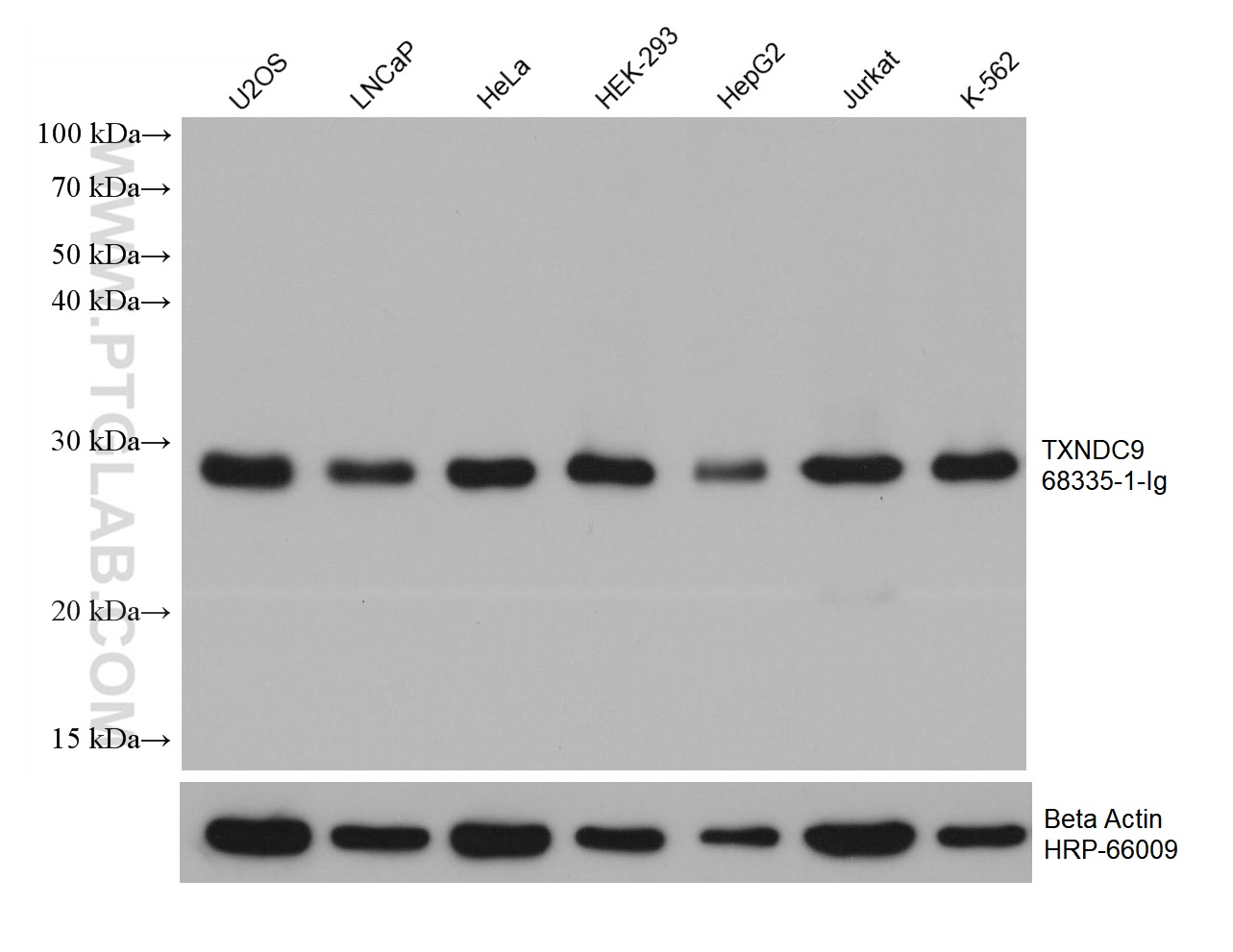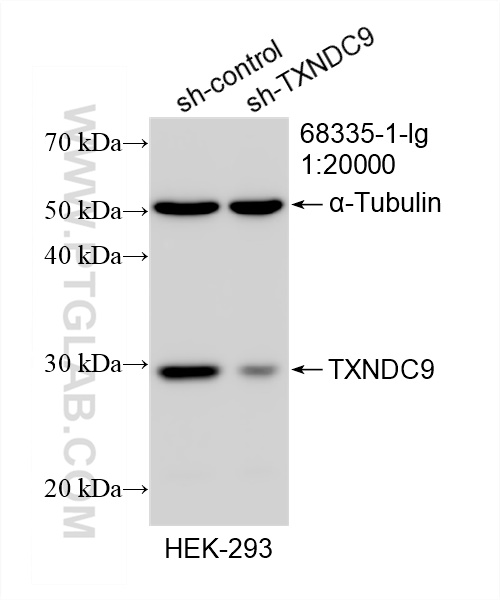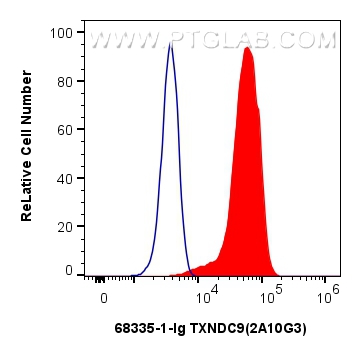验证数据展示
经过测试的应用
| Positive WB detected in | U2OS cells, HEK-293 cells, LNCaP cells, HeLa cells, HepG2 cells, Jurkat cells, K-562 cells |
| Positive FC (Intra) detected in | HEK-293 cells |
推荐稀释比
| 应用 | 推荐稀释比 |
|---|---|
| Western Blot (WB) | WB : 1:5000-1:50000 |
| Flow Cytometry (FC) (INTRA) | FC (INTRA) : 0.80 ug per 10^6 cells in a 100 µl suspension |
| It is recommended that this reagent should be titrated in each testing system to obtain optimal results. | |
| Sample-dependent, Check data in validation data gallery. | |
产品信息
68335-1-Ig targets TXNDC9 in WB, FC (Intra), ELISA applications and shows reactivity with human, mouse samples.
| 经测试应用 | WB, FC (Intra), ELISA Application Description |
| 经测试反应性 | human, mouse |
| 免疫原 | TXNDC9 fusion protein Ag33259 种属同源性预测 |
| 宿主/亚型 | Mouse / IgG1 |
| 抗体类别 | Monoclonal |
| 产品类型 | Antibody |
| 全称 | thioredoxin domain containing 9 |
| 别名 | Thioredoxin domain-containing protein 9, Protein 1-4, Protein 1 4, PHLP3, ATP-binding protein associated with cell differentiation |
| 计算分子量 | 226 aa, 27 kDa |
| 观测分子量 | 27 kDa |
| GenBank蛋白编号 | BC005968 |
| 基因名称 | TXNDC9 |
| Gene ID (NCBI) | 10190 |
| RRID | AB_3085059 |
| 偶联类型 | Unconjugated |
| 形式 | Liquid |
| 纯化方式 | Protein G purification |
| UNIPROT ID | O14530 |
| 储存缓冲液 | PBS with 0.02% sodium azide and 50% glycerol , pH 7.3 |
| 储存条件 | Store at -20°C. Stable for one year after shipment. Aliquoting is unnecessary for -20oC storage. |
背景介绍
TXNDC9, also known as APACD, has a negative effect on protein folding by significantly reducing the activity of chaperone protein TCP1 complex ATPase activity. Including actin or tubulin.
实验方案
| Product Specific Protocols | |
|---|---|
| WB protocol for TXNDC9 antibody 68335-1-Ig | Download protocol |
| FC protocol for TXNDC9 antibody 68335-1-Ig | Download protocol |
| Standard Protocols | |
|---|---|
| Click here to view our Standard Protocols |


